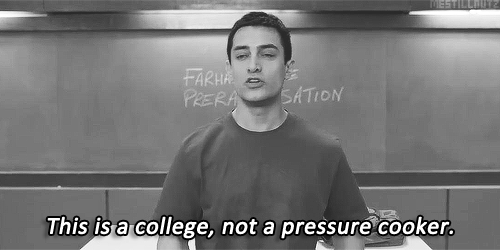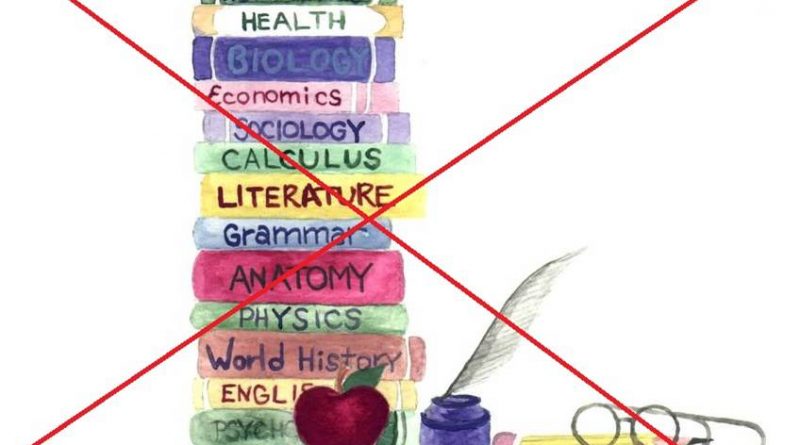Indian Education System Killing Creativity
Education is undeniably one of the most important aspects of life. As we grow up, education can help us to develop as people, learning new life skills, and improving our knowledge.
Education is all about learning, thinking, analyzing, questioning, answering, solving, and experimenting with concepts, logic, languages, and other things.
The function of education is to teach one to think intensively and to think critically. Intelligence plus character – that is the goal of true education.
All of this information is then carried across into our daily lives as an adult, helping us to become better, more informed citizens and enabling us to lead happier and more successful lives. While most feel that education is a necessity, they tend to use it as a tool for reaching a specific target or personal mark, after which there is no further need to seek greater education.
Everybody agrees that education is important and will not disappear in the future. It will prepare the generation for the unpredictabilities and changes. Yet, this is much easier said than done.
So, what is the problem, and more importantly how do we solve it? Whether our education system really works on achieving the ultimate goals of education. Has it proved to be a successful weapon in shaping youth and the economy?
- Most subjects, such as chemistry and physics, focus on textbook knowledge when they could be fun applied subjects to learn.
- There is a lesser focus on physical education and sports, and more focus on studying all day long.
- Sex Education is not given in Indian Schools, which is something that needs to be thoughtfully inculcated each year for students.
- There is a lesser focus on character building, as many schools do not have lessons on etiquette and mannerisms.
- The subject matter and homework puts a tremendous amount of stress on students, which is incredibly difficult for many to bear.
- Large classes in schools mean that there is lesser focus on each student’s learning. This is hazardous to a student’s education journey during, as well as after school.
- Since most knowledge is only memorized and not retained for the long run, students feel lost after school. Many even remain unemployed.
- Many schools charge exorbitant fees, which becomes a burden for parents. Schools with affordable fees generally have lesser funds, which affects the quality of education.
- Examinations are more focused on results, rather than continuous learning.
The Indian Education System has many problems, and solutions should be thought of and implemented, to bring about a more balanced education for students. Some solutions that can be brought about are a decline in fees, shorter holidays, regular tests, and more focus on extra-curricular activities as well. Whether or not the Indian Education System is good or bad, is a long-debated topic, that doesn’t have an end. However, once the focus shifts to bringing out the best learning experience for the students, a lot more positive changes can be brought about.
The structure of our education system mirrors the stifling rigidity of the curriculum.
How, a teacher stands at the head of pupils and feed some given information without knowing if it’s understood or not and they passively absorb it ( half of them who absorb it vomit in the exams, remaining take a good sleep ).
Cognitive psychologist Jean Piaget once said, “The principle goal of education is to create men who are capable of doing new things, not simply of repeating what other generations have done”.
It’s apparent from the above that the essence of education lies in bringing creativity out of the pupils. But, ‘WHERE DOES CREATIVITY COME FROM’? Creativity is a thriving force that simply needs to be highlighted. Richard Florida said, “Creativity at once is our most precious resource”. This shows how dominant our future creativity is.
Therefore, Creativity is the art of thinking ‘out of the box’. We see, sometimes, how a little kid can make innovative things out of the trash or how its thinking can steer ours.
The concepts of creativity in education not only includes art, literature, dance but also allows one to maintain better problem-solving skills (social, economic, and personal issues at least), remain innovative, and excel beyond the ordinary methods of learning.
But, the education system has certainly failed in bringing out creativity. The school system isn’t outstanding because of Public and Private school differences. Mostly, in Public schools there is a lack of emphasis on poor children, lack of interest in teachers, substandard infrastructure, shortage of textbooks, lack of awareness of the importance of education, the nutritional deficit must be taken care of as Malnutrition can affect child’s ability.
The government needs to take a dig at reforming the educational policies for the backward and poor ones. But, blaming government merely won’t help. Even the Private education system is degrading and money-oriented. There is a lack of understanding of concepts, it’s just about memorizing and mugging-up. They have to go to coaching right after school. WHY? THERE IS RISE IN COACHING INSTITUTES?
Also Read: Impact Of COVID-19 On Education Sector
It just creates stress amongst them. When schools or colleges which is their first educational resort fail to acknowledge them, how can we expect coaching to provide them with sufficient knowledge? The whole day goes just by traveling from school to coaching and back home with nothing in their brains.
Students have to completely rely on textbooks where textbooks do not mention how the topics are relevant in practical life and most of the syllabus is in theoretical form. Remember that scene of ‘THREE IDIOTS’ when Aamir wrote his friends’ names on board and everyone looked for that name in the books without even giving a thought about it. DOESN’T IT SHOW HOW MUCH WE RELY ON MUGGING-UP AND SCORING INSTEAD OF UTILIZING OUR CAPABILITIES?
“TELL ME AND I FORGET, TEACH ME AND I REMEMBER, INVOLVE ME AND I LEARN.” BENJAMIN FRANKLIN
Methods of teaching need to re-look. Since there is a dearth of capable teachers there is a need for revolutionary change in pedagogy. Along with students, teachers’ evaluations and exams must be conducted which can improve education in a better way.
One of the flaws is very few teachers are there students’ ratio, According to Right To Education, ‘There should be one teacher for every thirty students.’ So, there should be more appointment of teachers. In India, we see that not great respect is given to the teaching profession, we often hear ‘KI TEACHER BANNA KONSI BADI BAAT HAI’, ‘BOTH HI SIMPLE PADHAI HOTI HAI .’ But in South Korea, which has high literacy rates, there is high respect for it.
Blind Grade System is one of the drawbacks of killing creativity in students. The education system does not support the intellectual brain of students. The main concern is to get through the schools with good grades. This way slow learners get discouraged as marks are taken as an assessment of students’ talent.
Instead of completely relying on textbooks, students should be exposed to economic and societal problems in the world. The system is incentivizing hyper-competitiveness rather than encouraging to co-learn.
In the top 100 universities list by ‘Times Higher Education World Reputation Rankings 2016’ none of the Indian Universities could make it into the list.
Apparently, research says, movies motivate to a great extent in the decision making of the education system, the teachers, the parents, and students!
‘THREE IDIOTS’ was one of the very enjoyable movies that brought a stir. It was definitely one of those movies that raised a very important issue that can, under no circumstance, be dismissed and forgotten. This movie taught every child to believe in himself ( ALL IZ WELL), to do the study with passion and choice. It showed how stressful schools and colleges are, this stress might lead to suicide attempts too. Therefore, a child must be given an environment where he can easily uplift his capabilities.

How can we forget Taare Zameen Par when it comes to talking about the burden of studies. Aamir Khan along with Darsheel Safari did a fabulous job in Taare Zameen Par. This movie imprinted an emotional and valuable message to every educationalist. It was also titled Little Stars on earth. This movie particularly centered on a kid who is suffering from dyslexia, however, is a great daydreamer and painter! The focus is majorly on how we miss out the innocence, freeness, enthusiasm, and our kid’s interests.
“APNI AMBITIONS KA WAZAN APNE BACHO KE NAAZUK KANDHON PE DAALNA, IT’S WORSE THAN CHILD LABOUR.
Movies can force you to remove the stigma of creating generations ‘race-winning rats’. Moreover, we see around us children struggling to make money, discriminating their talents and interests. After all, doing what interests them the most will make their job more fruitful. This can violate their skills to utilize their brains.
Self-help books and autobiographies of successful persons should be a part of the syllabus as well as more effective classes for G.K and moral values must be introduced.
All one needs to do is to observe, expose them to experiences and knowledge. The best way is to channel their energies into something that gives them pleasure and is productive. To see the change in the world, one needs to be the change after all.
The motto behind education is not to make machines, but to grow beautiful human beings. Teachers or the people affecting a child’s atmosphere should know, winning doesn’t leave more impact than learning does. The education system has lots to do with the special abilities of a child that should be discovered and encouraged. Good grades are just outcomes and the fact is, “Har Bache Ki Apni khoobi Hoti hai, apni kaabiliyat Hoti hai,apni chahat Hoti hai”

The function of education is to teach one to think intensively and to think critically. Intelligence plus character – that is the goal of true education.



